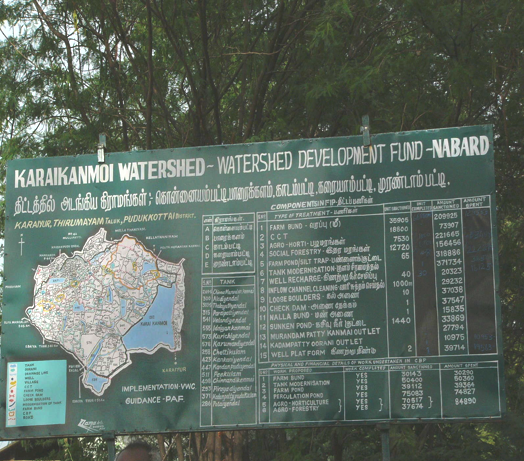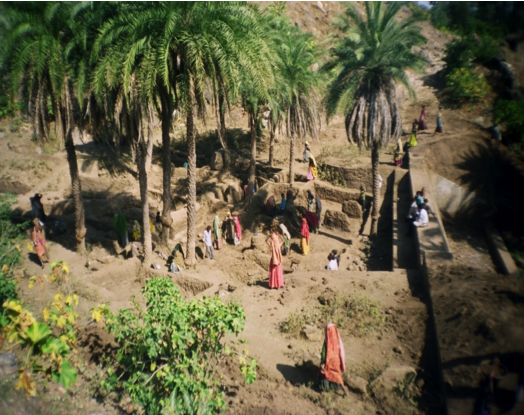
|
|||
Major Areas :: Watershed Management : Shift Cultivation |
|||
WATERSHED DEVELOPMENT PROJECT IN SHIFTING CULTIVATION AREAS (WDPSCA)
This is a special Central Assistance Scheme taken up on Watershed basis for treatment of Arable and Non-Arable lands affected by Shifting Cultivation and to provide alternative farming method to the farmers who are practicing destructive farming methods. The Ministry of Agriculture and Co-operations, Government of India has launched a central scheme known as the Watershed Development Project in Shifting Cultivation Areas (WDPSCA) during the 8th Plan period in 1994-95. In this period, 12 projects at the total cost of Rs.600.00 lakhs has been taken up and completed during the year 1999-2000, 12,900 Hectares area Shifting/Jhum Cultivation areas was treated benefiting 3,200 nos. families. During the 9th Plan, 38 (thirty eight) new watershed projects were approved by the Government of India at the total cost of Rs.2062.00 lakhs. The cumulative expenditure upto the year 2004-05 is Rs.1412.00 lakhs. The total area treated is 18,500 hectares and the families benefited from the Scheme are 4,900 nos. The Census report conducted by the Director of Census operations during the year 1981 indicated that about 76,000 hectares area in the State has been cultivated annually for Shifting/Jhum cultivation purposes. The total families dependent in Shifting /Jhum Cultivation has been estimated at 51,700 nos The scheme is aimed at overall development of jhum areas on Watershed basis, reclaiming the land affected by shifting cultivation and socioeconomic up gradation of jhumia families living in these areas so as to encourage them to go in for settled agriculture. Objectives
Watershed Development Project in Shifting Cultivation Areas (WDPSCA) of the Ministry of Agriculture and Cooperation, Government of India is a Special Central Assistance to State Plan Programme for the benefit of jhumia families who are living below poverty line. The scheme will be implemented on watershed basis with a cost norm of Rs. 10,000/- per Ha on net treatable area. The financing of the scheme includes treatment of arable and non-arable land, drainage line, creation of water bodies development of agriculture/horticulture/plantation crops forestry and land based household production system as-package of rehabilitation component. As a whole the focus is on natural resource management, economic enhancement, leading to poverty alleviation and eco friendly living. Funding Agency Central Government Funding Pattern 100% Central Assistance to the State Plan as Additional Central Assistance Beneficiaries Community Eligibility criteria A minimum of 25% of the watershed area is under shifting cultivation, 50% and above nos. of families are engaged in shifting cultivation as the only means of livelihood, willingness of jhumias to go for improvement of jhum etc. The scheme will be implemented on watershed basis with a cost norm of Rs 10,000/- per ha on net treatable area. How to Avail
The eligible PIAs may apply giving all relevant information to satisfy the conditions laid down in the selection criteria. They may either indicate their preferences of the villages where they would like to work or leave the final decision to the District watershed Development Committee (DWDC) to allocate selected villages. Appointment of watershed Development Team (WDT) Each PIA shall be eligible to engage four persons to work on a full time basis as Watershed Development Team (WDT). The members of the WDT should be at least graduates in subject disciplines of relevance to the watershed. Project Commencement date 3 months from the date of nomination of PIA shall be deemed to be the date of commencement of the Watershed project for the selected villages attached to PIA. The PIA and WDT will be eligible to draw the first installment of management component fund under the project. The duration of the project will be 5 years. Technology Management Aspects for Development of Resources: Technologies under watershed development programme can broadly be classified into two types:
Implementation
Source: |
|||
| Home | Seasons & Varieties | Tillage | Nutrient Management | Irrigation Management | Weed Management | Crop Protection | Cost of Cultivation | Disclaimer © All Rights Reserved. TNAU-2016. |
|||

